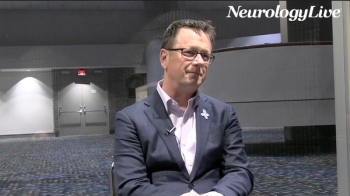
- August 2021
- Volume 4
- Issue 4
Less Invasive Epilepsy Surgery May Help Turn Candidates Into Consults
Recent advances in stereoelectroencephalography and laser ablation may help convert those who may be candidates for pediatric epilepsy surgery to those who proceed with a consultation.
EPILEPSY IS THE MOST COMMON NEUROLOGIC condition in childhood1 with one-third of those affected experiencing seizures refractory to medications.2 Among these children with medication-resistant epilepsy, particularly those with a potentially epileptogenic brain lesion, guidelines recommend a referral to an epilepsy surgical center.3 Standard curative epilepsy surgeries include a focal cortical resection, lesionectomy or lobectomy, functional or anatomic hemispherotomy, and resections guided by invasive monitoring. Corpus callosotomy is an example of a commonly performed palliative epilepsy surgery.
All these approaches traditionally involve morbidity associated with performing a craniotomy, opening of the dura, and gaining access to the targeted brain regions prior to the resections themselves—risks referred to as “corridor-related morbidity” by Daniel Curry, MD, director of Functional Neurosurgery and Epilepsy Surgery and The John S. Dunn Foundation Endowed Chair for Minimally Invasive Epilepsy Surgery at Texas Children’s Hospital (TCH) in Houston.
Because of the inherently invasive nature of traditional epilepsy surgeries and the perception of associated risks, a significant gap exists between individuals who may be candidates for epilepsy surgery and those who proceed with an evaluation.4 This gap may be mitigated by relatively recent advances that allow for a minimally invasive approach in both diagnostic and treatment techniques used in epilepsy surgery.5 The advent of stereoelectroencephalography (SEEG) coupled with MRI-guided laser interstitial thermal therapy (MRI-guided LITT) offers one such strategy useful in a number of potential scenarios, each described in detail in this article.
Prior to SEEG: Phase 1 Presurgical Epilepsy Evaluation
Before any surgical intervention may be recommended, a presurgical evaluation at an experienced epilepsy center is necessary to localize the seizure onset zone and clarify a surgical plan. Curative versus palliative goals should be discussed with families prior to and during the evaluation. This process may be divided into 2 “phases,” with only some patients requiring the second phase, invasive monitoring. As part of the phase 1 study, noninvasive diagnostic techniques such as a careful history and physical examination, structural neuroimaging (3 Tesla MRI6,7), continuous video electroencephalogram, and neuropsychological testing are most important in confirming the presence of focal, multifocal, or generalized epilepsy and localization of seizure onset. On an individualized basis, additional functional neuroimaging studies may further assist with definition of the seizure onset zones in relation to eloquent brain regions, particularly in a nonlesional case.8 These include fluorodeoxyglucose F 18 positron emission tomography9 and task-based and resting-state functional brain MRI.10 Additional neurophysiology studies include subtraction of interictal from ictal single-photon emission computed tomography,11 magnetoencephalography,12 and brain electrical source analysis.13 Transcranial magnetic stimulation may assist in identification of eloquent motor areas.14
If permanent postoperative language or memory deficits remain a concern despite the noninvasive techniques mentioned, the Wada (intracarotid sodium amobarbital) procedure may be utilized to assist in lateralization of these important functions.15
Results of all studies are carefully discussed and assessed for any localizing features or deficits during a multidisciplinary epilepsy surgery conference with epileptologists, neurosurgeons, neuroradiologists, and neuropsychologists. Based on group consensus, a surgical plan may be offered. In cases determined to have a reasonable chance for meaningful reduction or cure for seizures and with data that appear incomplete or suggestive of multiple onsets, a plan for invasive monitoring (a phase 2 study) may be recommended.
SEEG: Phase 2 Presurgical Evaluation
Subdural and depth electrodes were utilized as early as 1959 to study the onset and evolution of seizures. The Montreal Neurological Institute established SEEG as a useful localizing tool in 1972. SEEG allows for direct recording of deeper, often bilateral and disparate cortical areas through a minimally invasive approach. SEEG electrodes may be placed in the operating room under general anesthesia via a small twist-drill hole utilizing a conventional stereotactic frame, frameless stereotactic system, or robotic assistance. Precise placement of electrodes is mandatory to adequately sample epileptogenic regions and circumvent important vascular structures. Robotic assistance is a relatively recent advance in technology that has been established as safe, accurate, and efficient in the pediatric population.16,17 Studies have estimated hemorrhage risk utilizing SEEG to be similar to the 4% reported in subdural grid cases, but the infection risk of 1% with SEEG is lower than a reported 3% infection risk for grid cases.18,19 Additional studies recommend caution when using more than 13 electrodes, especially in older patients with prior surgeries, noting a 0.2% risk for symptomatic hemorrhage per electrode.20
For each patient, electrode placement relies on a well-developed hypothesis, with electrodes sampling the proposed onset(s) and evolution of seizures based on clinical semiology and noninvasive diagnostic studies obtained during phase 1. Trajectories are planned with consideration for potential laser ablation utilizing phase 1 data for targeted coverage—an approach termed dynamic SEEG.21 Typical scenarios for utilizing SEEG include bitemporal epilepsy, discerning between frontal or temporal epilepsy, and nonlesional epilepsy, or when an area outside an obvious lesional region may be implicated (ie, “mesial temporal plus” cases22-24).
As SEEG has become more widely used, as well as robotic assistance, TCH has placed SEEG electrodes in children as young as 12 months. Skull thickness remains an important factor in maintaining the security of bolt and electrode placement. We have utilized as many as 39 individual depth electrodes in a single patient in our practice to date.
If amplifier space allows, scalp electrodes may be placed (typically while the patient is still in the operating room) to assist in discerning epileptic from nonepileptic events, particularly if the area covered by SEEG electrodes is limited. If the SEEG coverage outnumbers amplifier capacity, recording from every other contact may be performed in electrodes furthest away from the suspected onset and adjusted as needed over the admission.
In our practice at TCH, when the patient’s typical epileptic seizures are recorded without SEEG change, additional SEEG electrodes may be placed based on the recorded propagation pattern of the seizure to confirm ictal onset and clarify the surgical plan during the same admission. This has been demonstrated as safe at other centers as well.25 Functional mapping may be performed via SEEG electrodes to identify eloquent motor or language regions on an individualized basis, though this may be limited by electrode coverage. Lower maximum stimulation parameters should be used compared with subdural grids due to an increased electrode surface area in contact with brain tissue.26 Cortical stimulation of SEEG electrodes may also be done to elicit typical seizures to test a hypothesis regarding ictal onset.27
MRI-Guided LITT
Following data collection with SEEG and identification of a surgical target, a surgical plan is generated and electrodes are explanted. Depending on the specific patient scenario, MRI-guided LITT may be utilized immediately following electrode removal under the same sedation encounter or, if needed, at a later date. Two systems have been approved by the FDA in the treatment of solid tumors and focal epilepsies: Medtronic’s Visualase in 2007 and Monteris Medical’s NeuroBlate in 2009.28,29
The Visualase system allows for the immediate replacement of SEEG electrode in the operating room with a 1.6-mm fiber-optic, laser-tipped catheter using the same bolts and trajectories, with a 14- to 16-mm ablation volume diameter. The Monteris system requires a separate procedure for catheter insertion because of its 3.3-mm probe size but has the ability for a larger (3.5-cm) diameter of ablation.
A brain MRI is performed to confirm laser probe placement. During the ablation procedure, infrared laser energy is directed at the surgical target, resulting in increased temperature and localized coagulative necrosis monitored on MRI thermography. The laser fibers may be moved along the trajectories to target additional regions for ablation. Important limitations include proximity to areas with a cooling effect on surrounding brain tissue, such as blood vessels, ventricles, and prior resection sites. These structures have the potential to affect the extent of an ablation plan. Pulsation artifact and fixation devices may impair interpretation of the thermogram. Following ablation and confirming destruction of the intended target, imaging is performed again to evaluate for the presence of unexpected hemorrhage. Postoperatively, most patients are discharged within a day or two after the procedure.
MRI-guided LITT has been utilized in multiple pediatric epilepsy scenarios, including tuberous sclerosis complex (TSC), focal cortical dysplasia, temporal lobe epilepsy, hypothalamic hamartoma, periventricular heterotopia, and insular epilepsies.29-36 Further, MRI-guided LITT may be considered as a minimally invasive alternative to corpus callosotomy with similar long-term results.37-39 Most of these published series involve relatively small numbers of pediatric patients, with success depending on the ability to both identify and ablate the entire epileptogenic region. Multiple laser trajectories may be utilized in this scenario.
Severe complications were reported for 3.4% of patients and include (depending on the specific location of ablation) postoperative weakness, diabetes insipidus, trapped right ventricle with obstructive hydrocephalus and bilateral papilledema, and short-term memory deficits.40 Of the remaining patients, 78% experienced no complications and 19% experienced transient mild complications including hemiparesis, weakness, edema, delayed wound healing, hyponatremia, transient increase in gelastic seizures (with ablation targeting a hypothalamic hamartoma), stuttering, expressive language dysfunction, short-term memory dysfunction, ipsilateral Horner syndrome, and subclinical asymptomatic subarachnoid hemorrhage.40
Larger systematic disease–specific studies are needed to provide more informed comparisons of risks, benefits, and long-term outcomes between the minimally invasive approach of MRI-guided LITT and their “maximally invasive” counterparts.
Case Example No. 1
PATIENT EU IS A FORMER-TERM, right-handed 4-year-old girl with a diagnois of TSC associated with TSC2 at seizure onset at age 6 weeks. Her seizures occurred up to 30 times daily, remained refractory since onset, and evolved into infantile spasms at age 10 months. She was referred to our institution by Cincinnati Children’s Hospital Medical Center at age 32 months for a presurgical epilepsy evaluation, with neuroimaging revealing bilateral cortical tubers (FIGURE 1). She underwent SEEG/phase 2 placement at age 38 months with electrode placement based on noninvasive/phase 1 data. After nonlocalizing ictal signatures were recorded, additional SEEG electrodes were placed for a total of 25 electrodes (FIGURE 2). With this additional coverage, focal seizures were localized on SEEG to a tuber in the right prefrontal gyrus (FIGURE 3). Functional mapping was performed, which confirmed that the ictal onset zone did not overlap with eloquent motor regions (FIGURE 4). She underwent MRI-guided LITT of this tuber with 2 trajectories (FIGURE 5) and remains clinically seizure-free at 21 months postop (Engel Epilepsy Surgical Outcome Scale class I).
Case Example No. 2
PATIENT SR IS A FORMER-TERM, right-handed 18-year-old man with seizure onset at age 22 months attributed to an extensive dysembryoplastic neuroepithelial tumor (FIGURE 6). Following presentation, he underwent craniotomy with resection and biopsy. He later required a partial resection with right temporal lobectomy and underwent proton beam radiation at approximately age 3 and 5 years, respectively. Just prior to age 6 years, he developed a large tumor cyst that required stereotactic drainage and placement of an indwelling Ommaya reservoir. Since onset, his focal seizures appeared as an arousal from sleep, moan, or loud cry with tachycardia, hyperventilation, and oral automatisms, evolving into left hemitonic movements and left-hand dystonia. A vagus nerve stimulator was placed at age 8 years. He underwent MRI-guided LITT of residual tumor at age 11 years, which did not change or improve his seizure burden. A year later, following a repeat surgical evaluation, SEEG/phase 2 utilizing 6-depth electrodes was performed but failed to localize ictal onset, and surgery was not pursued. Given significant advances in technology and our increased institutional experience, our patient underwent a repeat SEEG/phase 2 study at age 17 years, ultimately utilizing 39 electrodes targeting both lesional and nonlesional regions. Coverage focused on the right temporal and insular regions with electrodes targeting the hypothesized onset and network (FIGURE 7). Seizures had broad, nonstereotyped ictal onset in electrodes within the right insular regions with rapid temporal spread (FIGURE 8). Because of concerns of multifocal onset within this region, the conference consensus was to offer an insular ablation followed by repeat craniotomy and generous right temporal resection. MRI-guided LITT was performed utilizing trajectories of 4 electrodes sampling the insular regions (FIGURE 9). The plan for subsequent right temporal lobectomy was canceled when the patient remained seizure free at 4.5 months following insular ablation. This is his longest period of seizure freedom since onset (Engel Epilepsy Surgical Outcome Scale class 1).
Outcomes and Future Directions
Few pediatric series have published early outcomes of surgeries combining the use of SEEG with MRI-guided LITT, with one describing 2 children with TSC and 2 adolescent/young adults with focal cortical dysplasia experiencing Engel I or II outcomes between 5 and 16 months following ablation.41 The authors conclude that the ideal patients to benefit from this approach are those with small, bilateral, and disparate epileptogenic foci visualized on neuroimaging, such as TSC and periventricular nodular heterotopia.
In palliative epilepsy surgeries, the minimally invasive approach of combining SEEG with MRI-guided LITT is favorable and may seem more palatable to families, especially when reoperation may be a consideration in the future. In some of these cases, the risk of an open craniotomy, subdural grid placement, and/or large resection may not be balanced by expected long-term seizure freedom or normalization of development.
The cases included in this review illustrate the utility of a minimally invasive approach in a child with bilateral lesions and discordant phase 1 data and in an adolescent with a history of multiple brain surgeries and seizures originating from deep structures within the brain. In both cases, reimplantation of SEEG electrodes during the admission helped clarify ictal onset when the initial SEEG coverage failed to do so. Following MRI-guided LITT, both cases resulted in seizure freedom.
Seizure freedom and improvement of sedative adverse effects from medications are the ideal goals, but there may be additional benefits to surgery. Maximizing quality of life and development may be more realistic goals than seizure freedom for children with highly refractory epilepsy such as TSC.42 Improvements in development may occur without complete seizure freedom43 and may also be underestimated with existing measures.44 And finally, in adults, a relative seizure reduction is similar to complete seizure freedom when predicting quality of life following surgery.45 These points, along with a shifting risk-benefit ratio offered by minimally invasive diagnostic and surgical techniques, suggest that more children may benefit from surgery than previously believed.
At first glance, combining an SEEG procedure with the expectation of an ablation to immediately follow appears very attractive. However, it is important to remember that in the pediatric population, outcomes with MRI-guided LITT have been studied less extensively than more traditional methods. This paucity in research may be due to the increased complexity and heterogeneity of our patients; however, understanding when “maximally” should be preferred over “minimally” invasive approaches is still needed to prevent unnecessary or incomplete procedures. And finally, recognizing the full impact of intervening during a developmentally critical period coupled with accurate identification of the most relevant outcome measures will clarify when surgery of any type should be preferred over additional medication trials. With this, it is our hope that tangible and lasting clinical improvements may be experienced by our patients and their families over their lifetimes.
REFERENCES
1. Aaberg KM, Gunnes N, Bakken IJ, et al. Incidence and prevalence of childhood epilepsy, a nationwide cohort study. Pediatrics. 2017;139(5):e20163908. doi:10.1542/peds.2016-3908
2. Kwan P, Brodie MJ. Early identification of refractory epilepsy. N Engl J Med. 2000; 342(5):314-319. doi:10.1056/NEJM200002033420503
3. Fountain NB, Ness PCV, Swain-Eng R, Tonn S, Bever CT Jr; American Academy of Neurology Epilepsy Measure Development Panel and the American Medical Association-Convened Physician Consortium for Performance Improvement Independent Measure Development Process. Quality improvement in neurology: AAN epilepsy quality measures: report of the Quality Measurement and Reporting Subcommittee of the American Academy of Neurology. Neurology. 2011;76(1):94-99. doi:10.1212/WNL.0b013e318203e9d1
4. Englot DJ, Ouyang D, Garcia PA, Barbaro NM, Chang EF. Epilepsy surgery trends in the United States, 1990-2008. Neurology. 2012;78(16):1200-1206. doi:10.1212/WNL.0b013e318250d7ea
5. Ravindra VM, Sweney MT, Bollo RJ. Recent developments in the surgical management of paediatric epilepsy. Arch Dis Child. 2017;102(8):760-766. doi:10.1136/archdischild-2016-311183
6. Obeid M, Wyllie E, Rahi AC, Mikati MA. Approach to pediatric epilepsy surgery: state of theart, part II: approach to specific epilepsy syndromes and etiologies. Eur J Paediatr Neurol. 2009;13(2):115-127. doi:10.1016/j.ejpn.2008.05.003
7. Bernasconi A, Cendes F, Theodore WH, et al. Recommendations for the use of structural magnetic resonance imaging in the care of patients with epilepsy: a consensus report from the International League Against Epilepsy Neuroimaging Task Force. Epilepsia. 2019;60(6):1054-1068. doi:10.1111/epi.15612
8. Jayakar P, Gaillard WD, Tripathi M, et al; Task Force for Paediatric Epilepsy Surgery, Commission for Paediatrics, and the Diagnostic Commission of the International League Against Epilepsy. Diagnostic test utilization in evaluation for resective epilepsy surgery in children. Epilepsia. 2014:55(4):507-518. doi:10.1111/epi.12544
9. Obeid M, Wyllie E, Rahi AC, Mikati MA. Approach to pediatric epilepsy surgery: state of the art, part I: general principles and presurgical workup. Eur J Paediatric Neurol. 2009;13(2):102-114. doi:10.1016/j.ejpn.2008.05.007
10. Vadivelu S, Wolf VL, Bollo RJ, Wilfong A, Curry DJ. Resting-state functional MRI in pediatric epilepsy surgery. Pediatr Neurosurg. 2013;49(5):261-273. doi:10.1159/000363605
11. Knowlton RC, Lawn ND, Mountz JM, Kuzniecky RI. Ictal SPECT analysis in epilepsy: subtraction and statistical parametric mapping techniques. Neurology. 2004;63(1):10-15. doi:10.1212/01.wnl.0000132885.83350.45
12. Verrotti A, Pizzella V, Trotta D, Madonna L, Chiarelli F, Romani GL. Magnetoencephalography in pediatric neurology and in epileptic syndromes. Pediatr Neurol. 2003;28(4):253-261. doi:10.1016/s0887-8994(03)00017-1
13. Sharma P, Scherg M, Pinborg, LH. Ictal and interictal electric source imaging in pre-surgical evaluation: a prospective study. Eur J Neurol. 2018;25(9):1154-1160. doi:10.1111/ene.13676
14. Chen R, Classen J, Gerloff C, Celnik P, Wassermann EM, Hallett M, Cohen LG. Depression of motor cortex excitability by low frequency transcranial magnetic stimulation. Neurology. 1997;48(5):1398-1403. doi:10.1212/wnl.48.5.1398
15. Hinz AC, Berger M, Ojemann GA, Dodrill C. The utility of the intracarotid amytal procedure in determining hemispheric speech lateralization in pediatric epilepsy patients undergoing surgery. Childs Nerv Syst. 1994;10(4):237-243. doi:10.1007/BF00301161
16. Nelson JH, Brackett SL, Oluigbo CO, Reddy SK. Robotic stereotactic assistance (ROSA) for pediatric epilepsy: a single center experience of 23 consecutive cases. Children (Basel). 2020;7(8):94. doi:10.3390/children7080094
17. Ho AL, Muftuoglu Y, Pendharkar AV, et al. Robot-guided pediatric stereoelectroencephalography: single-institution experience. J Neurosurg Pediatr. 2018;22(5):1-8. doi:10.3171/2018.5.PEDS17718
18. Ostergard T, Miller JP. Depth electrodes: approaches and complications. In: Lhatoo SD, Kahane P, Luders HO, eds. Invasive Studies of the Human Epileptic Brain. Oxford University Press; 2019:50-64.
19. Arya R, Mangano FT, Horn PS, Holland KD, Rose DF, Galuser TA. Adverse events related to extraoperative invasive EEG monitoring with subdural grid electrodes: a systematic review. Epilepsia. 2013;54(5):828-839. doi:10.1111/epi.12073
20. McGovern RA, Ruggieri P, Bulacio J, Najm I, Bingaman WE, Gonzalez-Martinez JA. Risk analysis of hemorrhage in stereo-electroencephalography procedures. Epilepsia. 2019;60(3):571-580. doi:10.1111/epi.14668
21. Bakr SM, Patel A, Zaazoue MA, et al. Standard work tools for dynamic stereoelectroencephalography using ROSA: naming convention and perioperative planning. J Neurosurg Pediatr. 2021;22:1-9. doi:10.3171/2020.8.PEDS20420
22. Kalamangalam GP, Tandon N. Stereo-EEG implantation strategy. J Clin Neurophysiol. 2016;33(6):483-489. doi:10.1097/WNP.0000000000000254
23. Olivier A, Boling WW, Tanriverdi T. Techniques in epilepsy surgery: the MNI approach. Cambridge University Press; 2012: 287.
24. Kahane P, Barba C, Rheims S, Job-Chapron AS, Minotti L, Ryvlin P. The concept of temporal ‘plus’ epilepsy. Revue Neurol (Paris). 2015;171(3):267-272. doi:10.1016/j.neurol.2015.01.562
25. Whiting AC, Bulacio J, Whiting B, Jehi L, Bingaman W. Difficult-to-localize epilepsy after stereoelectroencephalography: technique, safety, and efficacy of placing additional electrodes during the same admission. Oper Neurosurg (Hagerstown). 2020;20(1):55-60. doi:10.1093/ons/opaa323
26. Ritaccio AL, Brunner P, Schalk G. Electrical stimulation mapping of the brain: basic principles and emerging alternatives. J Clin Neurophysiol. 2018;35(2):86-97. doi:10.1097/WNP.0000000000000440
27. Kovac S, Kahane P, Diehl B. Seizures induced by direct electrical cortical stimulation--mechanisms and clinical considerations. Clin Neurophysiol. 2016;127(1):31-39. doi:10.1016/j.clinph.2014.12.009
28. LaRiviere MJ, Gross RE. Stereotactic laser ablation for medically intractable epilepsy: the next generation of minimally invasive epilepsy surgery. Front Surg. 2016;3:64. doi:10.3389/fsurg.2016.00064
29. North RY, Raskin JS, Curry DJ. MRI-guided laser interstitial thermal therapy for epilepsy. Neurosurg Clin N Am. 2017;28(4):545-557. doi:10.1016/j.nec.2017.06.001
30. Curry DJ, Gowda A, McNichols RJ, Wilfong AA. MR-guided stereotactic laser ablation of epileptogenic foci in children. Epilepsy Behav. 2012;24(4):408-414. doi:10.1016/j.yebeh.2012.04.135.3
31. Lewis EC, Weil AG, Duchowny M, Bhatia S, Ragheb J, Miller I. MR-guided laser interstitial thermal therapy for pediatric drug-resistant lesional epilepsy. Epilepsia. 2015;56(10):1590-1598. doi:10.1111/epi.13106
32. Wu C, Jermakowicz WJ, Chakravorti S, et al. Effects of surgical targeting in laser interstitial thermal therapy for mesial temporal lobe epilepsy: a multicenter study of 234 patients. Epilepsia. 2019;60(6):1171-1183. doi:10.1111/epi.15565
33. Wilfong AA, Curry DJ. Hypothalamic hamartomas: optimal approach to clinical evaluation and diagnosis. Epilepsia. 2013;54(suppl 9): 109-114. doi:10.1111/epi.12454
34. Curry DJ, Raskin J, Ali I, Wilfong AA. MR-guided laser ablation for the treatment of hypothalamic hamartomas. Epilepsy Res. 2018;142:131-134. doi:10.1016/j.eplepsyres.2018.03.013
35. Fayed I, Sacino MF, Gaillard WD, Keating RF, Oluigbo CO. MR-guided laser interstitial thermal therapy for medically refractory lesional epilepsy in pediatric patients: experience and outcomes. Pediatr Neursurg. 2018;53(5):322-329. doi:10.1159/000491823
36. Perry MS, Donahue DJ, Malik SI, et al. Magnetic resonance imaging-guided laser interstitial thermal therapy as treatment for intractable insular epilepsy in children. J Neurosurg Pediatr. 2017;20(6):575-582. doi:10.3171/2017.6.PEDS17158
37. Huang Y, Yecies D, Bruckert L, et al. Stereotactic laser ablation for completion corpus callosotomy. J Neurosurg Pediatr. Published online August 2, 2019. doi:10.3171/2019.5.PEDS19117
38. Palma AE, Wicks RT, Popli G, Couture DE. Corpus callosotomy via laser interstitial thermal therapy: a case series. J Neurosurg Pediatr. 2018;23(3):303-307. doi:10.3171/2018.10.PEDS18368
39. Roland JL, Akbari SHA, Salehi A, Smyth MD. Corpus callosotomy performed with laser interstitial thermal therapy. J Neurosurg. Published online December 13, 2019. doi:10.3171/2019.9.JNS191769
40. Hoppe C, Helmstaedter C. Laser interstitial thermotherapy (LiTT) in pediatric epilepsy surgery. Seizure. 2020;77:69-75. doi:10.1016/j.seizure.2018.12.010
41. Cobourn K, Fayed I, Keating RF, Oluigbo, CO. Early outcomes of stereoelectroencephalography followed by MR-guided laser interstitial thermal therapy: a paradigm for minimally invasive epilepsy surgery. Neurosurg Focus. 2018;45(3):E8. doi:10.3171/2018.6.FOCUS18209
42. Treiber JM, Curry DJ, Weiner HL, Roth J. Epilepsy surgery in tuberous sclerosis complex (TSC): emerging techniques and redefinition of treatment goals. Childs Nerv Syst. 2020;36(10):2519-2525. doi:10.1007/s00381-020-04715-2
43. Grayson LE, Peters JM, McPherson T, et al; TACERN Study Group. Pilot study of neurodevelopmental impact of early epilepsy surgery in tuberous sclerosis complex. Pediatr Neurol. 2020;109:39-46. doi:10.1016/j.pediatrneurol.2020.04.002
44. Van Schooneveld MMJ, Braun KPJ. Cognitive outcome after epilepsy surgery in children. Brain Dev. 2013;35(8):721-729. doi:10.1016/j.braindev.2013.01.011
45. Sheikh S, Thompson N, Bingaman W, Gonzalez-Martinez J, Najm I, Jehi L. (Re)defining success in epilepsy surgery: the importance of relative seizure reduction in patient-reported quality of life. Epilepsia. 2019;60(10):2078-2085. doi:10.1111/epi.16327
Articles in this issue
over 4 years ago
Recent Breakthroughs in the Treatment of Alzheimer Diseaseover 4 years ago
GHB as a GABA Receptor Agonist for Narcolepsy Therapyover 4 years ago
It Is Time to Redefine Outcomes in Pediatric Epilepsy Surgeryover 4 years ago
Questions Linger Around COVID-19’s OriginNewsletter
Keep your finger on the pulse of neurology—subscribe to NeurologyLive for expert interviews, new data, and breakthrough treatment updates.


































